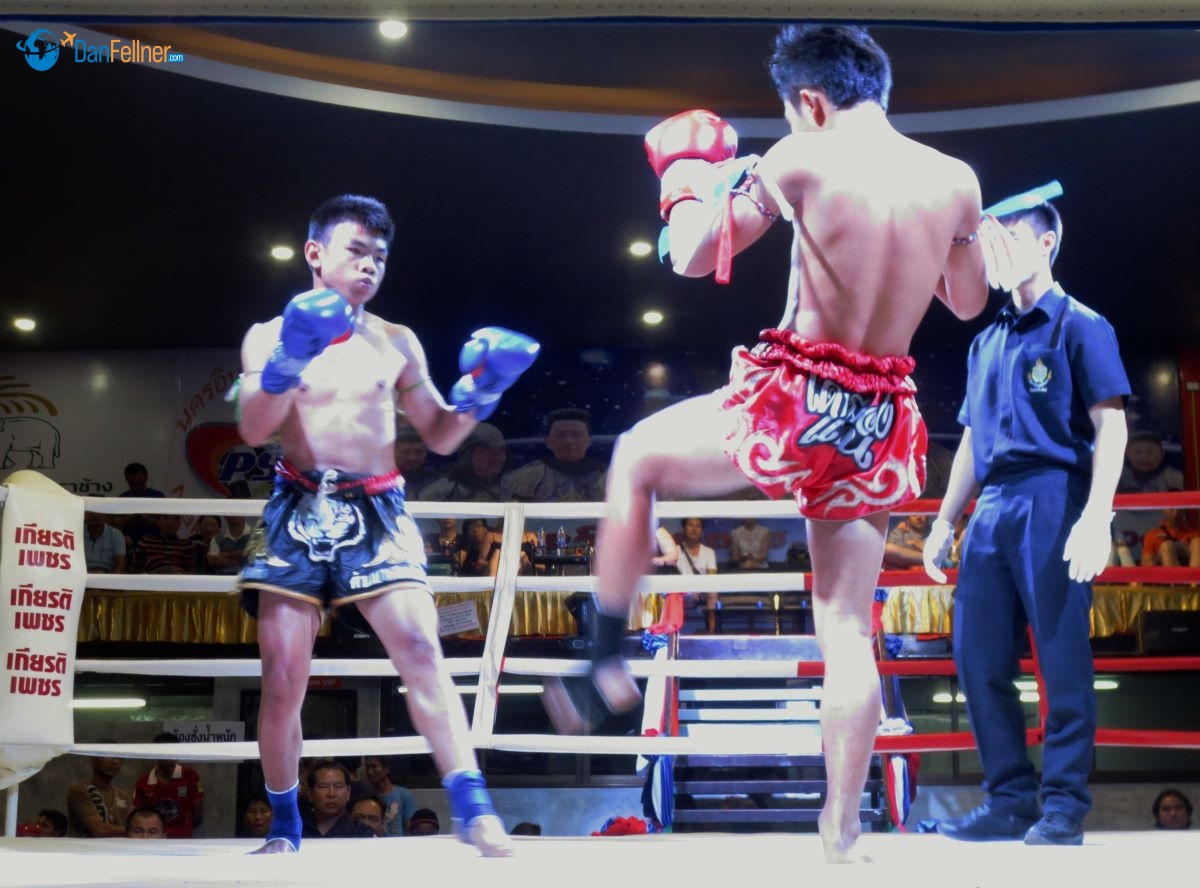Kickboxing offers unique glimpse into Thai culture
March 18, 2016
CHIANG MAI, Thailand — The public address announcer was speaking in a heavy accent over a garbled sound system and I couldn’t decipher what he was saying. Then I noticed the crowd began to rise. The announcer repeated himself and the second time I could clearly understand.
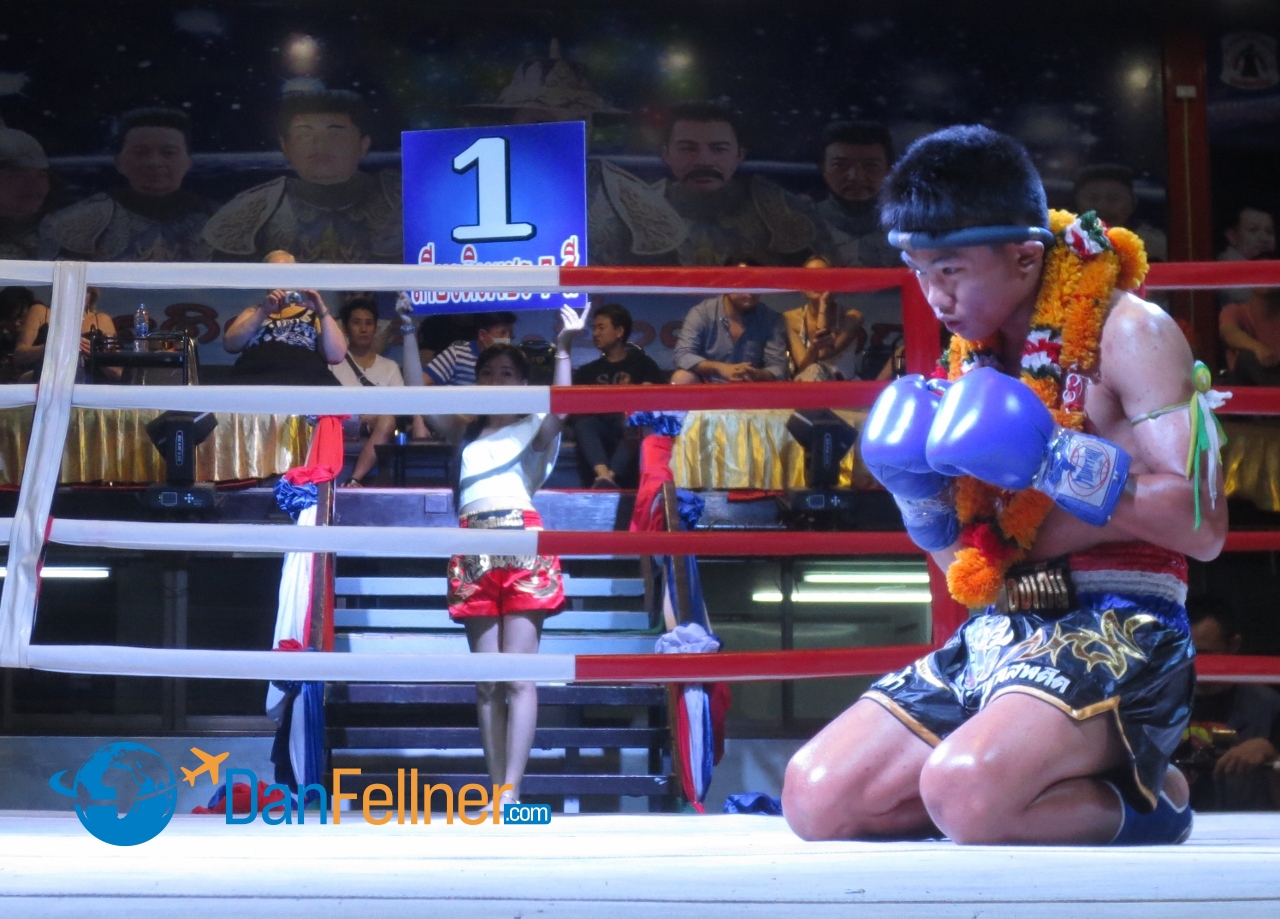
A Thai kickboxer psyches himself up before the first round.
“Please stand up to pay respect to the King of Thailand,” he requested.
In a country where King Bhumibol Adulyadej, also known as Rama IX, is highly revered, about 200 fans and I rose to our feet and stood silently. The Thai national anthem followed.
With the preliminaries out of the way, so began my first up-close look at the Thai national pastime – Muay Thai – a martial art otherwise known as kickboxing. It turned out to be one of the most intense experiences of my three-month stay in Thailand.
It was a Thursday night at the Chiangmai Boxing Stadium, one of two leading venues in Chiang Mai where kickboxing is on display. For about $20, I received a ringside seat, transportation from my hotel to the arena, and a can of Chang beer, my favorite local brew.
Muay Thai, which dates back to the 16th century, was developed by Siamese soldiers who lost their weapons in battle. It is known as “the art of eight limbs” because fighters are allowed to use punches, kicks, elbows and knee strikes, thus using eight “points of contact,” as opposed to “two points” (fists) used in regular boxing.
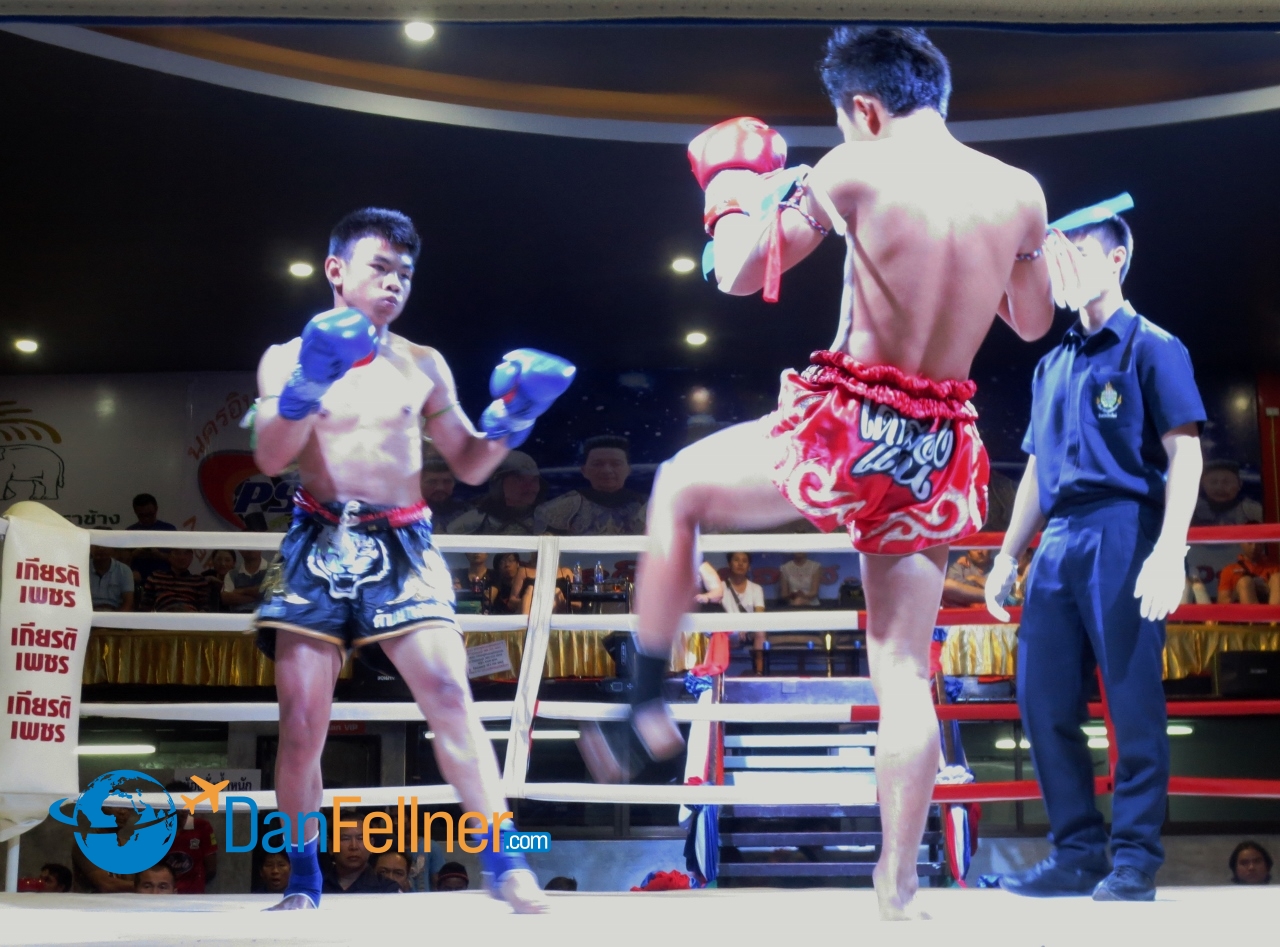
Thai kickboxing dates back to the 16th century.
There were seven fights on the bill, with the combatants exhibiting varying size, skill and experience. Indeed, some of the early fights involved teenagers who looked like they barely weighed 100 pounds.
I was told that the fighters at this venue were superior to the other leading boxing arena in the city – Thapae Boxing Stadium, the latter of which is more centrally located and considerably cheaper. In fact, tour operators who sell boxing tickets even hinted that the fights at Thapae were really exhibitions with fixed results staged solely for the entertainment value of the tourists. I wanted to see the real deal, so I paid more for what I hoped would be a far more authentic Muay Thai experience.
From the opening bell of the first fight, I could tell that the fights on display at the Chiangmai Boxing Stadium — undoubtedly – are for real. I was seated so close to the action, I was repeatedly doused by the fighters’ sweat. And I was struck by the sheer force of the blows and how much punishment the participants withstood on all parts of their bodies. At one point, I actually thought I heard a bone crack, when a fighter took a wicked kick to his leg before crumpling to the mat. The referee didn’t even bother counting him out; there was no doubt he wasn’t getting up.
Muay Thai reminded me of cage-fighting, only with traditional boxing ropes rather than a cage. Another difference is that when a fighter goes down, his opponent has to go to a neutral corner, rather than being allowed to pound a fighter on the canvass into submission.
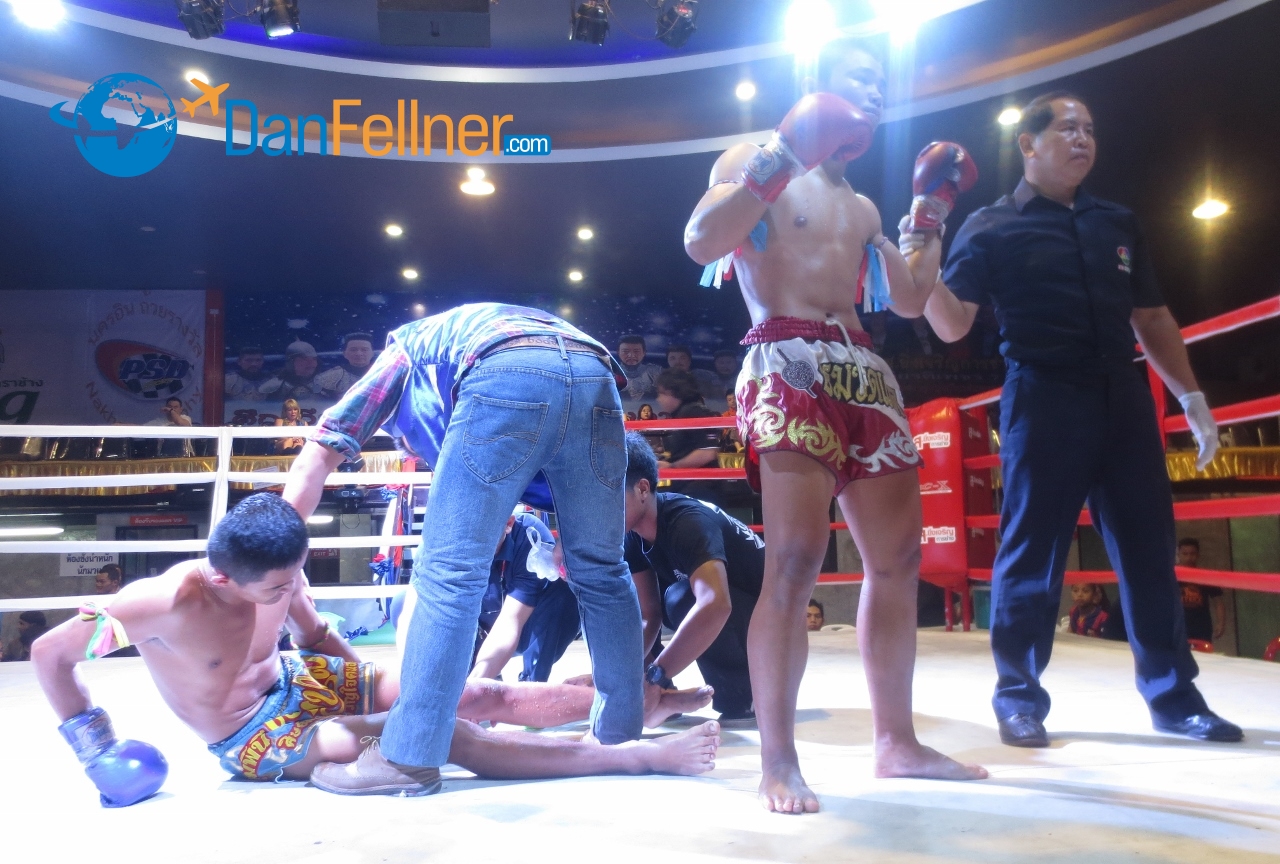
Every fight on the card ended in a knockout.
Other than that, pretty much anything goes in Thai kickboxing – punching, kicking, elbowing, clenching, low blows, cheap shots, even knees to the groin.
In other words, it was like watching a Republican presidential debate.
Not one of the evening’s fights lasted the full five rounds; all resulted in knockouts – with the loser ending up flat on his back surrounded by trainers and medics.
Thai fighters wear no shoes, no padding – other than a protective cup — or headgear. As far as I could tell, none of the losing fighters were seriously hurt, although several of them had to be helped out of the ring by the medical staff. I’m guessing the fighters don’t get paid very much, although those who do well in Chiang Mai have the opportunity to move up the ladder and fight at the country’s largest kickboxing venue in Bangkok, where the purses are larger.
The violence of Muay Thai seems incongruous to the typically polite, calm and passive demeanor of the Thai people. Perhaps it’s an outlet for Thais to let off some steam.
On the drive back to my hotel, I reflected on the night’s event. I was glad I had gone. It had given me an interesting glimpse into Thai culture.
But like the time at a local restaurant when I had ordered khao phat nam phrik narok, which literally translates to “rice fried with chili paste from hell,” I wasn’t all that eager to try it again anytime soon.
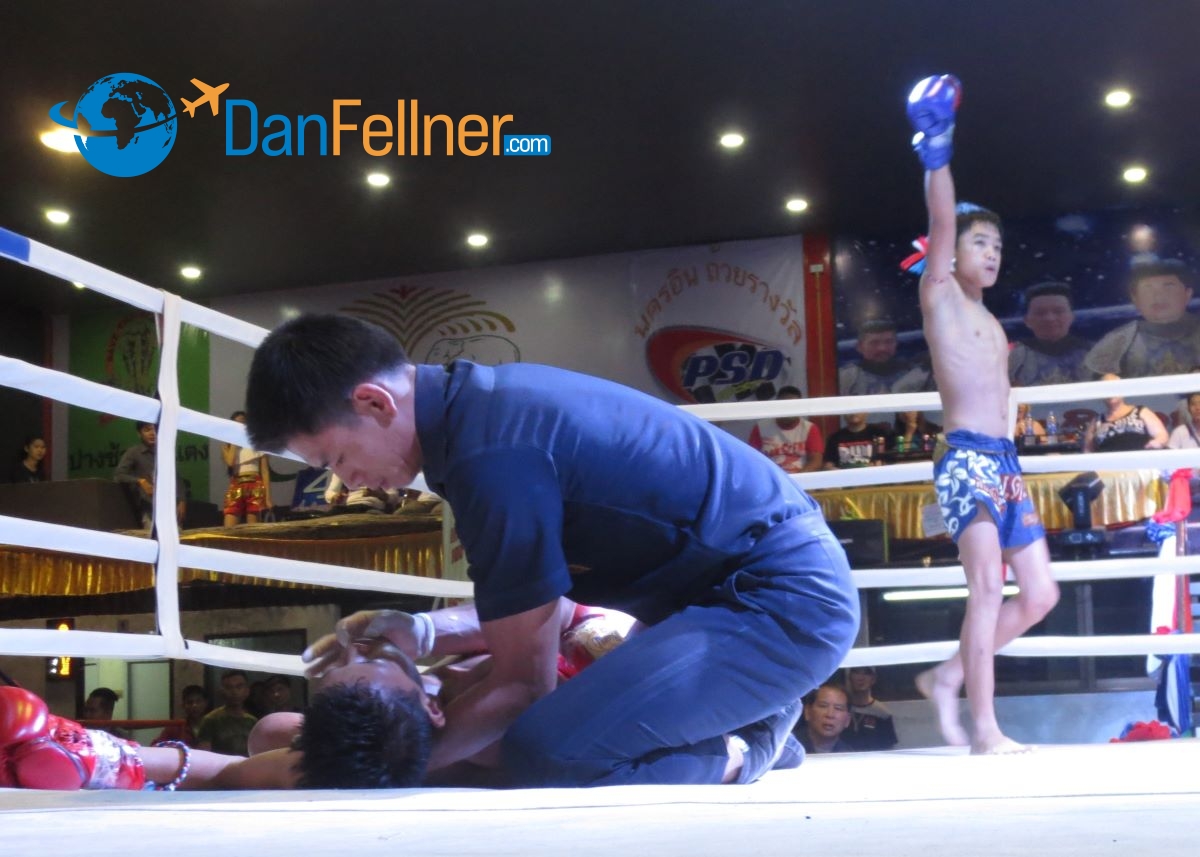
© 2016 Dan Fellner

